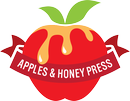Hebrew Choice and Possibilities: Maximizing Precious Time for Building Skills

This is part of a series of articles exploring the diversity of Hebrew learning strategies at congregational schools.
Central Synagogue in New York City, one of the largest synagogues in North America, unsurprisingly, runs a big religious school.
About 700 students attend the school, called the Lese Center for Living Judaism, once a week for about two hours. (The school meets on various weekdays, with no Sunday hours.) All the school’s teachers are on staff full time.
With limited time to cover so much content, in recent years educators there have been asking themselves hard questions about the role of Hebrew and what they truly want students to gain from time spent on it.
“Our overall goal is for our students to be literate and participating Jews,” says Rabbi Rebecca Rosenthal, director of youth and family education at Central Synagogue. “It’s a Iive question of whether we teach Hebrew as a language or Hebrew as a skill. For us, Hebrew is so connected to t’filah and participation in a service.”
She believes that the best way for students to learn Hebrew is to attend services regularly and participate. As such, the school has “also done a lot of work to move ourselves away from idea that our students will be fluent Hebrew readers,” says Rosenthal.
“Language acquisition requires more time than we have,” she says of the half hour devoted to Hebrew each week.
“We’re teaching Hebrew as a skill, and that skill is decoding. To us, that’s what is most essential for Hebrew.”
The school trains most of its teachers in-house, and focuses its training on effective methods for teaching decoding. The school’s Hebrew curriculum begins in kindergarten by hearing Hebrew words, “the vocabulary of Jewish life,” such as Torah, mitzvah, and Shabbat. By second grade, students are learning the Hebrew letters and beginning to vocalize the associated sounds. Third graders are divided into small groups and begin decoding in earnest.
They use Shalom Uvrachah, Shalom Hebrew, and Hineni Express to teach decoding, depending on the student’s age and when they begin school. Once they’re past the initial decoding stage, the siddur becomes their main resource.
“When kids see the prayers and structure and how they can connect to them, it can be a meaningful exercise,” Rosenthal says.
Some students who have been at the school since kindergarten “fly through decoding,” she says. “We can move them to more in-depth prayer learning and some beginning modern Hebrew.”
Rosenthal is quick to add that although students generally learn Hebrew faster the more time they put into it, “it’s not quite that simple.” Some of the frustration with learning Hebrew comes from lack of motivation or with needing different learning styles. “There’s no magic bullet,” she says.
In the effort to focus on decoding and maximize the weekly half hour of Hebrew, Central Synagogue educators eliminated writing from the curriculum. What Rosenthal has found, however, is that students have expressed that they miss that piece of Hebrew learning.
“We dropped writing because we didn’t think kids were leaning anything,” she says. “But we’re hearing that the kids see their teachers write on the board and notice that printing in the books looks different, and they’re asking about it.” Rosenthal is considering bringing back writing because “the physicality of writing may help them.”
The laser-like focus on decoding has brought stability to the school’s Hebrew program, and assessments are improving, even as Rosenthal acknowledges there’s always room for improvement.
“We still only have the kids in Hebrew for half hour each week. It’s still not enough time,” she says. “By coming consistently, and using the digital reinforcements and practicing at home, they become excellent decoders. We want them to accomplish ownership and mastery, and we get them over the finish line one way or another.”
Don’t forget to subscribe to our newsletter and connect with us on social media!





